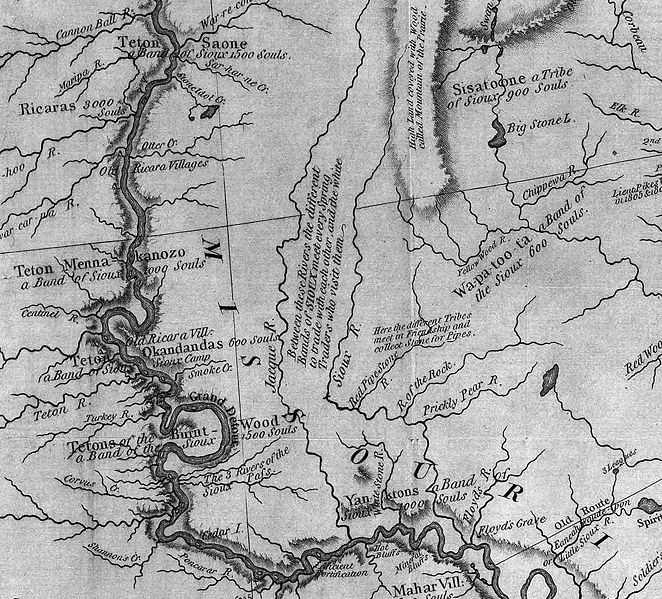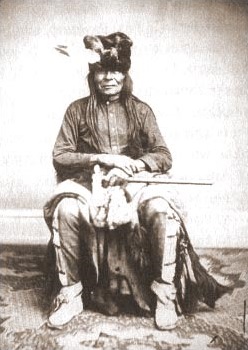
A Map of Lewis and Clark’s Track, with the St. James River (Jacque R.) in the middle, with the Yanktons Tribe mentioned near the bottom.
In descending the river, [Father De Smet] stopped several days with the Yanktons, who were encamped near the mouth of the James River. Chief Pananniapapi, “the man that Strikes the Ree,” was one of the noblest types of men of his race. He had met Father De Smet for the first time in 1844 and had attended his instructions, receiving from him the miraculous medal. From that time he had added the practice of admirable virtues to his invincible courage, and he professed toward the Blessed Virgin a touching piety. During the cholera epidemic he exposed his miraculous medal in the camp, and following his example, the Yanktons, three thousand in number, assembled to venerate it. The same day the plague disappeared.
Time and again the Methodists who endeavored to penetrate to the tribe were kept at a distance by the chief, who said to them: “You wish to enrich your wives and children at our expense. The Black Robe has neither wife nor child; his heart is not divided; he lives only for God and the happiness of the people who surround his cabin.” And the old man remained obdurate.
For twenty-two years he had looked forward to the day when he should receive baptism. The hour of grace had now struck. Father De Smet completed his instruction and received him into the Church. Once a Christian, Pananniapapi’s only thought was to procure the same happiness for his people.
Thus the great missionary, in the twilight of his years, realized his life’s dream, the evangelization of the Missouri tribes. A rich harvest was promised; not a single Indian refused to hear the word of God, not a wigwam remained closed. The Grosventres, Aricaras, and Mandans asked repeatedly for a Black Robe. The Yanktons offered to contribute two or three thousand dollars yearly to the support of the missions.

E. Laveille, S.J., The Life of Father De Smet, S.J. (1801–1873), trans. Marian Lindsay (New York: P. J. Kenedy & Sons, 1915), 336–7.
Short Stories on Honor, Chivalry, and the World of Nobility—no. 796






